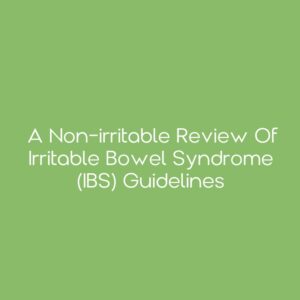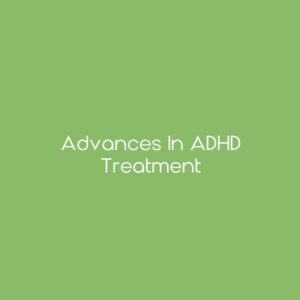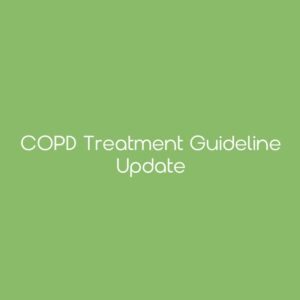Lethal But Legal Medications
Lethal But Legal Medications
This pharmacy law course explores the complexities and uncertainties surrounding legal medications, examining real-life instances where their use led to tragic outcomes despite adherence to regulatory standards. Through legal case studies, learners will gain insight into the challenges faced by healthcare professionals in mitigating risks associated with pharmaceutical products. Course content will highlight regulatory strategies for ensuring patient safety, addressing known risks, and navigating professional responsibilities in the face of uncertainty. This course also emphasizes the vital role of regulatory compliance and showcases the responsibilities of various regulatory bodies to provide the learner with a comprehensive understanding of the legal framework governing the practice of pharmacy.
Upon successful completion of this knowledge-based CPE course, pharmacists should be able to:
1. Discuss the three branches of government and the interrelationships between these three branches.
2. Explain the provisions of the Constitution of the United States and the applicability of those provisions to pharmacy practice.
3. Describe how market failures have been used by political scientists and economists to justify government action in the interests of the public.
4. Describe the professional responsibilities of healthcare professionals and institutions based on government-recognized public expectations.
5. Explain the diverse approaches to regulation adopted by government agencies to fulfill their obligations to the public.
6. Discuss how government agency dynamics can affect the need for flexible approaches to regulatory compliance aligned with agency goals.
7. Discuss the standards for new drug approval that are established under the federal Food, Drug & Cosmetic Act (FDCA).
8. Explain the statutory requirements for classification of a product as either a “drug” or as a “new drug.”
9. Describe the FDA’s authority to evaluate scientific evidence of pharmaceutical product safety and efficacy.
10. Summarize the FDA’s role in ensuring pharmaceutical product integrity under the FDCA, as amended by the Drug Supply Chain Security Act (DSCSA).
11. List factors that could significantly increase the risk of an illegitimate pharmaceutical product entering the drug supply chain.
12. Outline strategies for pharmacy compliance with the requirements established under the DSCSA.
13. Describe the role of the FDA in assuring safe drug use after a drug has been released for general marketing and use.
14 Review a program developed for the purpose of drug risk evaluation and mitigation.
15. Outline a systematic approach to ensure that patient information provided by pharmacists with medications is pursuant to relevant federal regulations.
16. List the factors that state regulations have established to assure safe, effective, and efficient generic medication substitution by pharmacists.
17. Discuss strategies to meet regulatory requirements in the provision of substituted generic drug products to patients.
18. Review the actions of pharmacists to determine whether legal standards have been met when substituting generic products for branded ones prescribed by their trade names.
19. Describe the breadth of the FDA concept of “misbranding.”
20. Explain how the FDA “deems” to be misbranding a variety of actions that are considered unlawful by the agency.
21. Explain how the FDA broadens the scope of misbranding to encompass various pharmacy activities beyond their apparent regulatory category.
22. State the current FDA position regarding the legality of off-label use and promotion.
23. Describe the significance of a drug package insert regarding the standard of care for a health professional.
24. Review a policy of manufacturer off-label promotion to determine whether the claims made are truthful and not misleading.
25. List the factors that created a regulatory environment in which the New England Compounding Center (NECC) tragedy occurred.
26. Describe a policy for regulatory compliance at a compounding pharmacy.
27. Review a program of compounding that complies with the post-NECC regulatory environment for compounding by pharmacists.
28. Discuss the responsibilities of pharmacists to honor valid opioid prescriptions and to decline invalid oness.
29. Explain how the concept of “red flags” can be used to identify concerns about opioid prescription legitimacy.
30. Describe a program for screening, assessing, and managing the risks of opioid prescription diversion.
31. List the requirements for nonprescription drugs under the FDCA as administered by the FDA.
32. Review situations in which pharmacists may have responsibilities to assist patients with the appropriate use of nonprescription drugs.
33. Outline a policy that assures patients receive assistance with nonprescription medication inquiries while upholding patient autonomy.
34. Discuss the available recourse for pharmacy personnel dismissed for refusing to administer vaccinations.
35. Review patient compensation claims arising from alleged vaccine-related harm following administration by a pharmacy.
36. Describe the legal consequences for pharmacy personnel who fail to comply with immunization administration policies.
37. Discuss the concept of “rights” and “responsibilities” of patients who receive products and services from pharmacists.
38. Review the claim that a patient has failed to meet the patient’s responsibility as the beneficiary of pharmaceutical products and services provided by a pharmacist.
39. Describe a policy for pharmacy practice that incorporates the shared responsibilities of pharmaceutical care providers and their patients.
40. List the responsibilities of a pharmacist-in-charge (PIC).
41. Discuss situations in which a PIC may face significant challenges in fulfilling their role.
42. Describe an effective approach to meeting the responsibilities of a PIC.
43. Discuss the role of courts in determining patients’ rights to demand drug therapies not available under hospital policies.
44. Describe the possible consequences for the healthcare system if patients were allowed to demand the use of medications that are not the standard of care.
45. Explain the difference between “freedom to” and “freedom from” within the context of a patient’s request for a specific medication.
David B. Brushwood, R.Ph, J.D.
Senior Lecturer, The University of Wyoming School of Pharmacy
Pharmacy Law Content Developer, CEimpact
David B. Brushwood has no relevant financial relationships with ineligible companies to disclose.
This is not an ACPE-defined Certificate Program; learners who complete this course will receive ACPE CPE credit but will not be awarded completion of a Certificate Program.
Course fee includes course, course materials, and CPE credit submission to CPE Monitor.
Initial Release Date: May 6, 2024
Planned Expiration Date: May 6, 2027
This program is provided for educational purposes. CEimpact is not a law firm and does not provide legal advice of any kind. For legal advice, please contact a licensed attorney.
Copyright 2024, CEimpact. All Rights Reserved. Any reproduction of this course without express permission is strictly forbidden.
![]() CEImpact is accredited by the Accreditation Council for Pharmacy Education as a provider of continuing pharmacy education. Obtain CPE credit by completing the course, followed by the exam and evaluation (if applicable). Once successfully completed, your course will appear in your Completed Courses tab. Access your CPE statement of credit at www.MyCPEMonitor.net.
CEImpact is accredited by the Accreditation Council for Pharmacy Education as a provider of continuing pharmacy education. Obtain CPE credit by completing the course, followed by the exam and evaluation (if applicable). Once successfully completed, your course will appear in your Completed Courses tab. Access your CPE statement of credit at www.MyCPEMonitor.net.
¹CEImpact provides you with two (2) opportunities to complete the exam. The learner will not receive CPE credit after two failed attempts.
Additional information
| Duration | 15h 0m |
|---|---|
| Topic Designator | Law |
| ACPE | Yes |
| ACPE Topic | 03 Law |
| Role | Pharmacist |
| Media-Type | Written |
| Release Date | 5/6/24 |
| CEUs | 1.5 |
| ACPE Number | 0000-0107-24-142-H03-P |




